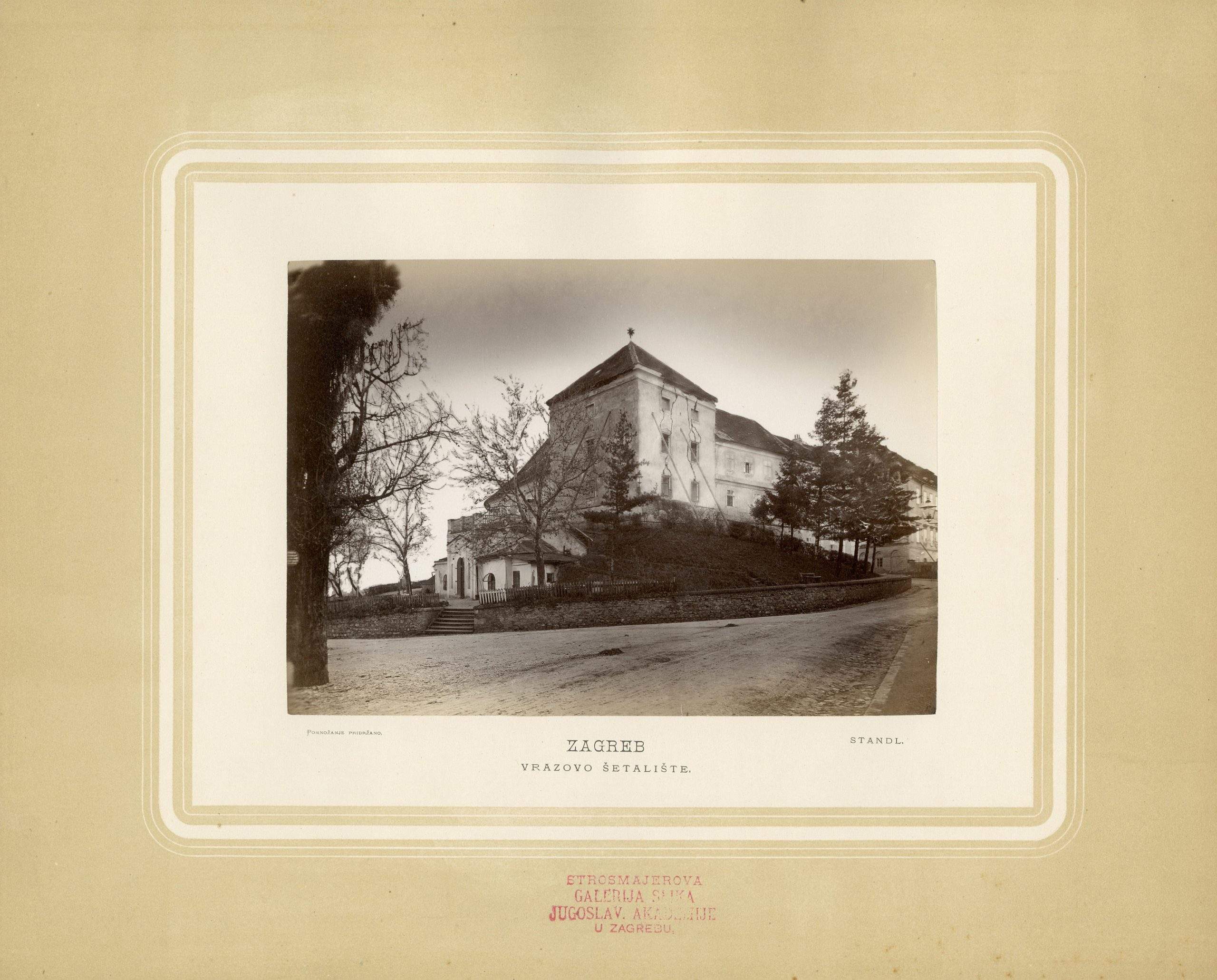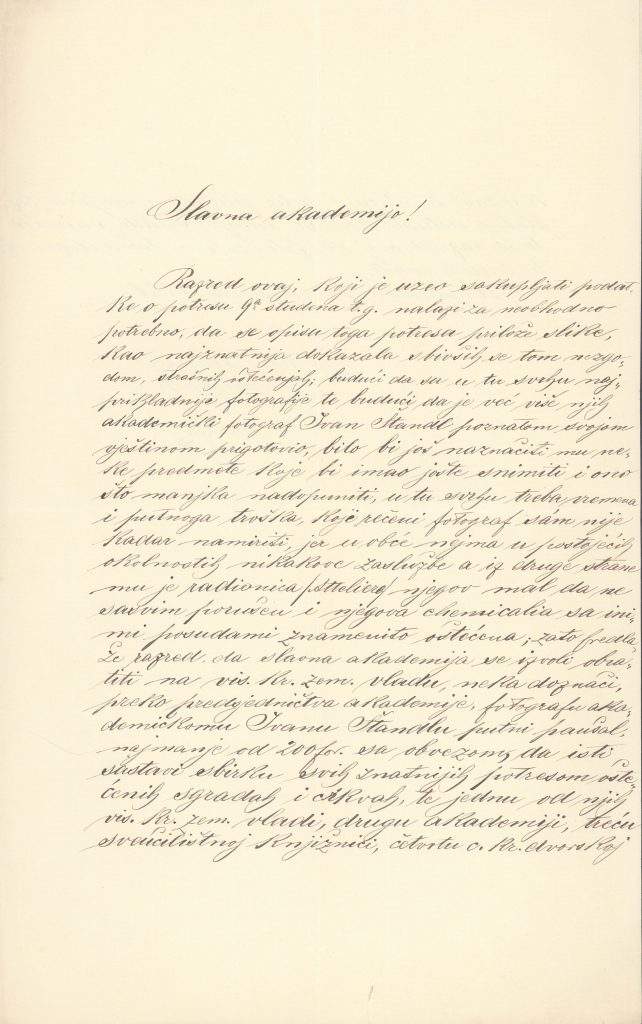In the early morning of November 9th, 1880, an earthquake hit Zagreb and its surrounding area. According to estimates made by today’s seismologists, the earthquake’s magnitude reached 6,3 on the Richter scale in its epicenter, north-east of the city. This estimate classifies it as a strong earthquake; moreover, the strongest ever recorded in the city’s area. On the same day, several smaller earthquakes occurred. The ground continued to shake with various levels of intensity for the entire following year, worsening the damage caused by the initial strong earthquake.
The consequences of this earthquake have been horrible. Zagreb’s observation point reports the following: “Giant swirls of dust enveloped the city after the first quake; chimneys and piles of brick fell off roofs, dividing walls fell to the ground covering the streets in ruins. One man has died, and several others have been wounded.” […] Churches, houses, and other buildings have cracked; chimneys have also cracked, some having turned on their axes for several degrees; some have broken in half and remained on their roofs, others have broken through both roof and attic, landing in the rooms below; some have tumbled into courtyards, pulling along a slew of broken brick; some have collapsed onto neighboring lower roofs, while most have tumbled to the streets, pelting them with brick, broken stone, and shattered plaster. Along with the overturned chimneys, most damage was caused by demolished gables and dividing walls. The streets were so laden with ruins that, in some places, carriages could not pass through. People were so afraid that they fled from their homes, roaming the streets with pale faces, eyes cast down, looking at the horrifying sight that has become of our beautiful city after only a 10-second occurrence. There is not a single structure in the city or out of it, that has not been more or less damaged. […](from: J. Torbar, Report on the earthquake in Zagreb on 9th November 1880, 1882)
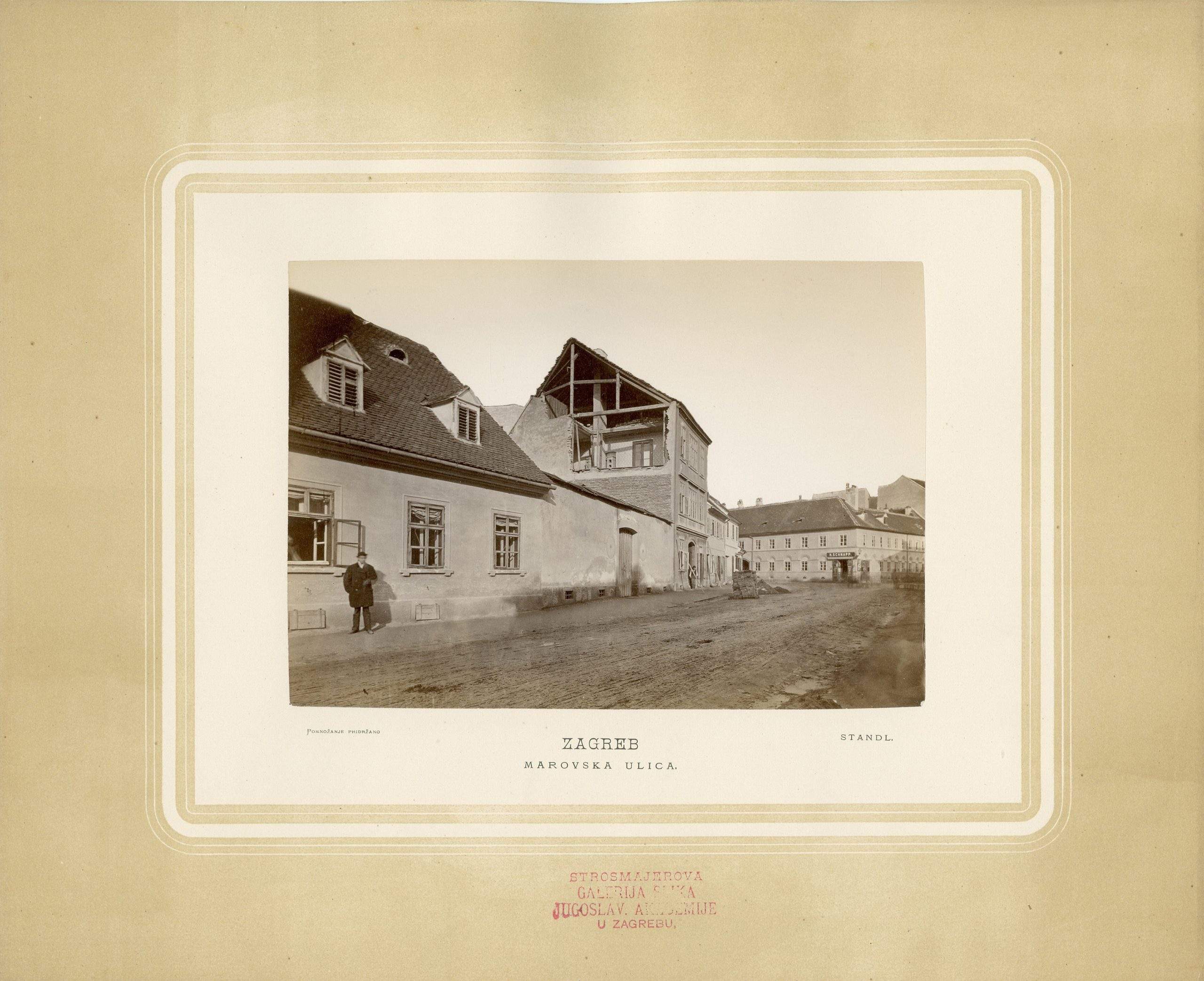
Of the many heavily damaged or completely ruined structures in villages surrounding the city, especially those that lie on the slopes of Medvednica, we should mention the churches in Stenjevec, Remete, Granešina, Kašina, Kraljev Vrh, and the castle in Sveta Helena.
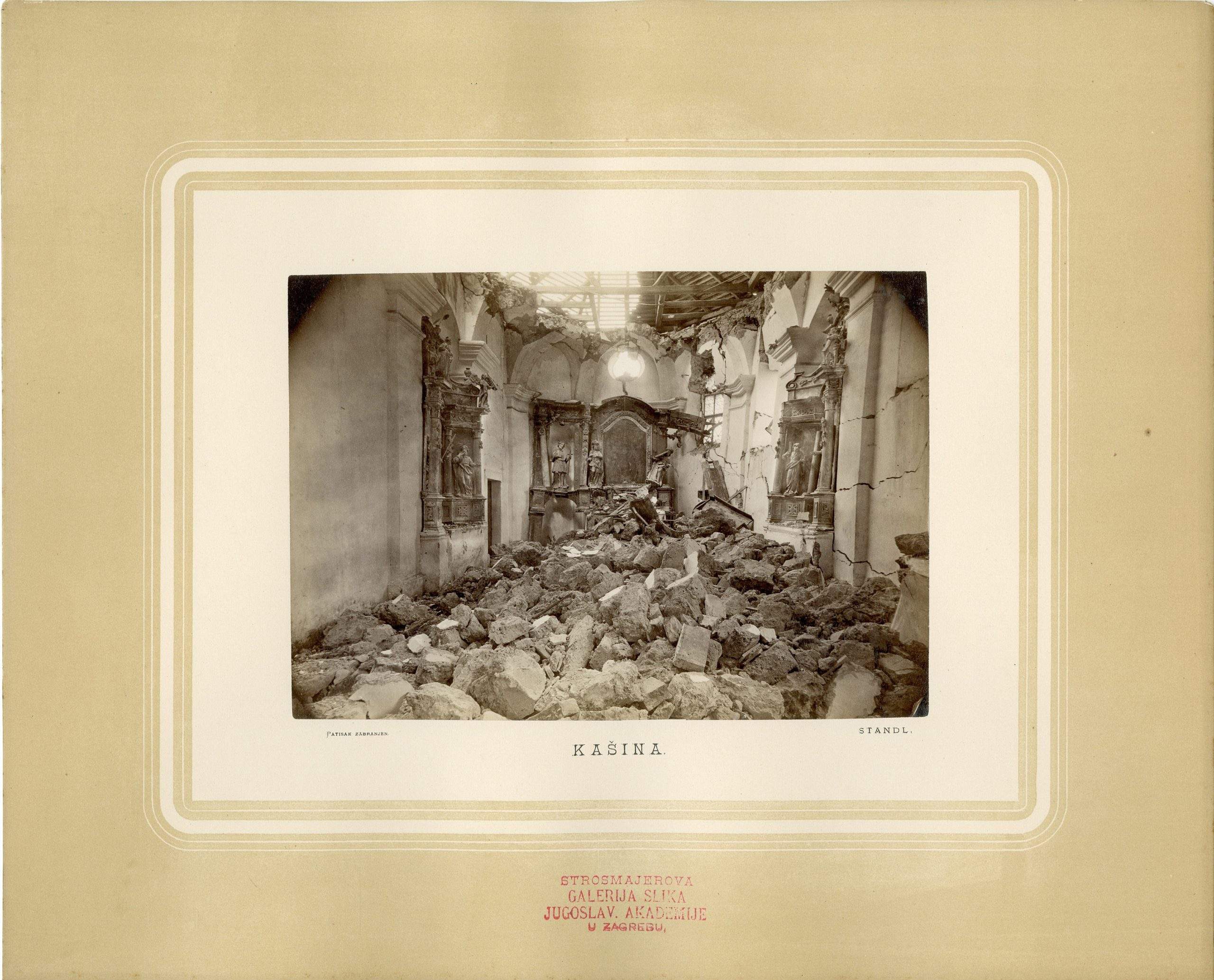
In Zagreb, the earthquake had spared only a handful of structures. Among the many buildings that were heavily damaged, some could not be repaired – like the orphanage in Vlaška street, or the Priester house on the corner of Ban Jelačić square and today’s Praška street, which had only recently been built, but had to be raised to the ground.
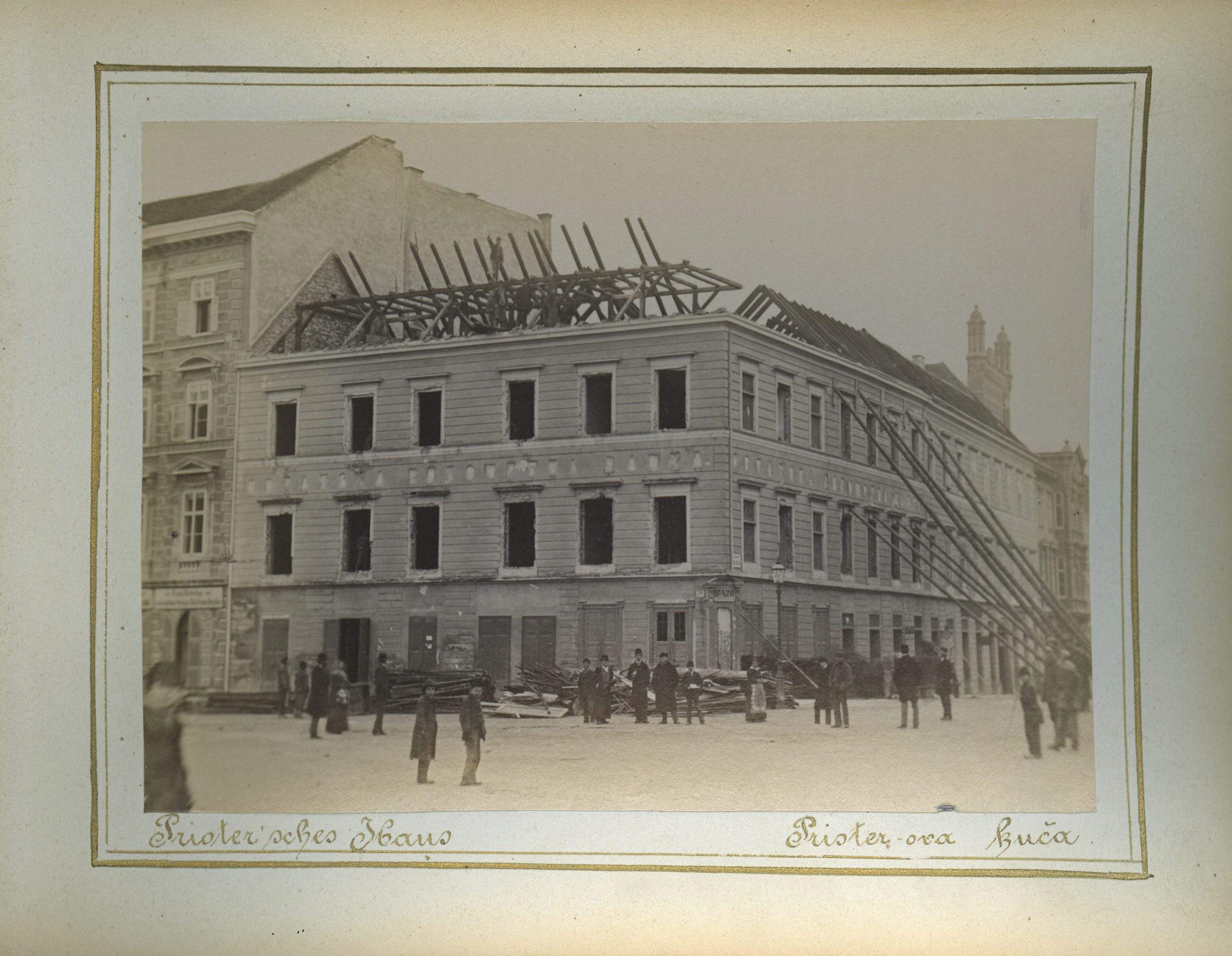

A map showing buildings in Zagreb damaged in the earthquake of 9th November 1880 (from: M. Hantken von Prudnik, Das Erdbeben von Agram im Jahre 1880, 1882). Less severely damaged structures are marked red, while those that were severely damaged are marked dark gray; uninhabitable structures are marked by a dotted line, and completely demolished ones are colored black.
Old parts of the city suffered the heaviest damage: Kaptol and the eastern and southern parts of Gradec. However, structures turned into ruins could also be seen in Nova Ves Street, Vlaška Street, and the Lower Town. On the Upper Town, the most devastation occurred in the churches of Saint Catherine and Saint Mark, the building on the Jesuit Square housing the High Military Command, the Royal convent for nobility, and a third of the buildings along the eastern side of Opatička Street and the Strossmayer Promenade. On Kaptol, most damage was suffered by the Cathedral and the Franciscan church, the Archbishop’s residence, the seminary, and an array of canonical curiae. On Nova Ves, the building housing the military school was also heavily damaged. In other parts of the city, devastation occurred in the Hospital of Merciful Brethren on Jelačić Square, the Kuković house in Ilica Street, the Music Institute in Gundulićeva Street, and the synagogue in Marija Valerija Street.

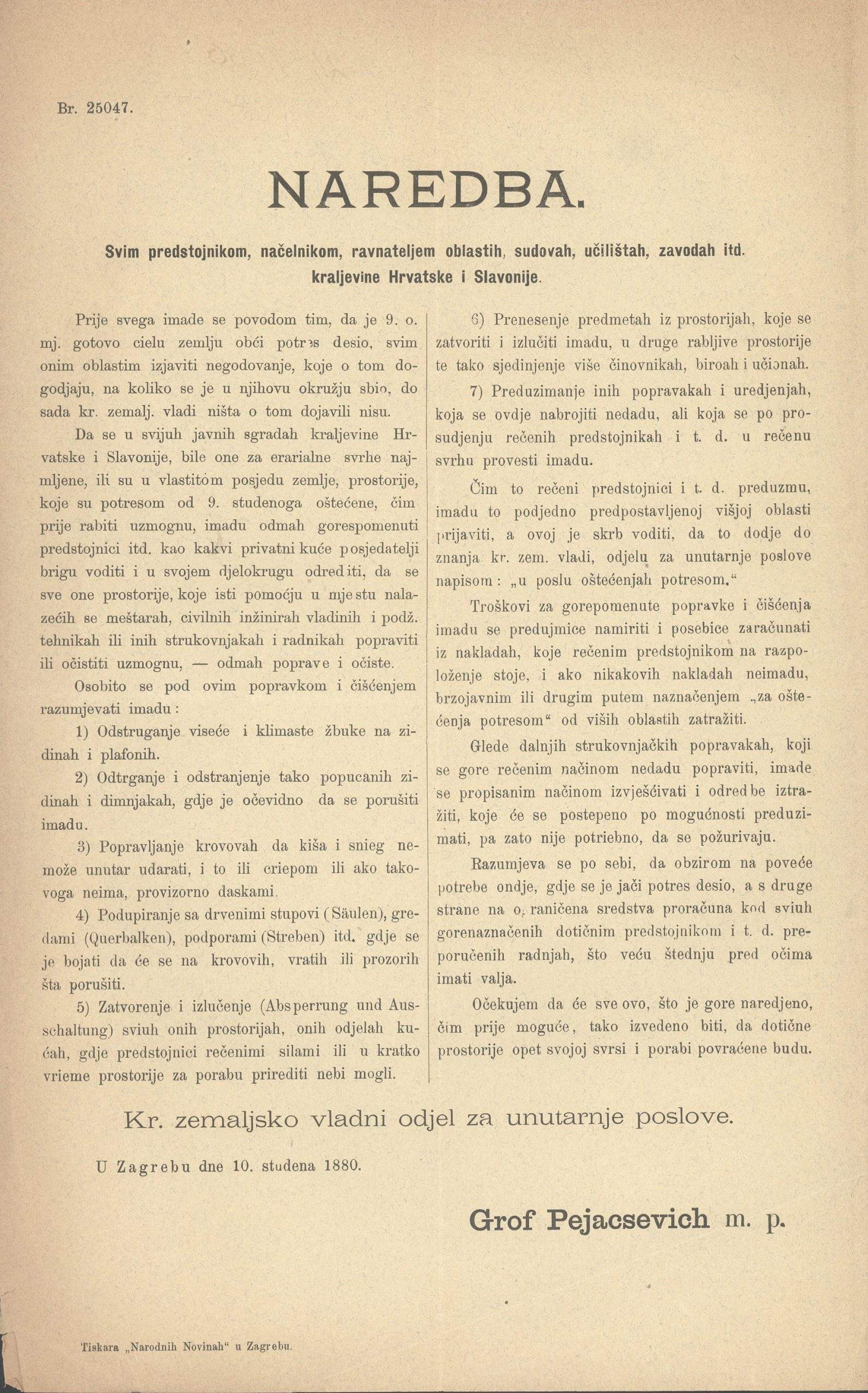
City services headed by Mayor Matija Mrazović instantly organized to stabilize the situation developing in the city, to remove any immediate danger, and to assess the damage caused by the earthquake, as well to attempt to accrue the funds necessary for restoration. The preservation of law and order was aided by the military stationed in Zagreb; the Provincial Government and the High Command made engineers available to the city, while many construction workers from other parts of Croatia, Carniola, and Styria were employed to remove the debris and repair damaged structures. The total damage assessment climbed to 3,3 million forints. The restoration, which would only partially be financed from dedicated funds, and mostly through loans, was monitored by the Provincial Government. The restoration itself stretched over the following several decades, resulting in some fundamental changes and modernization processes, largely defining the style of the city center as we know it today.
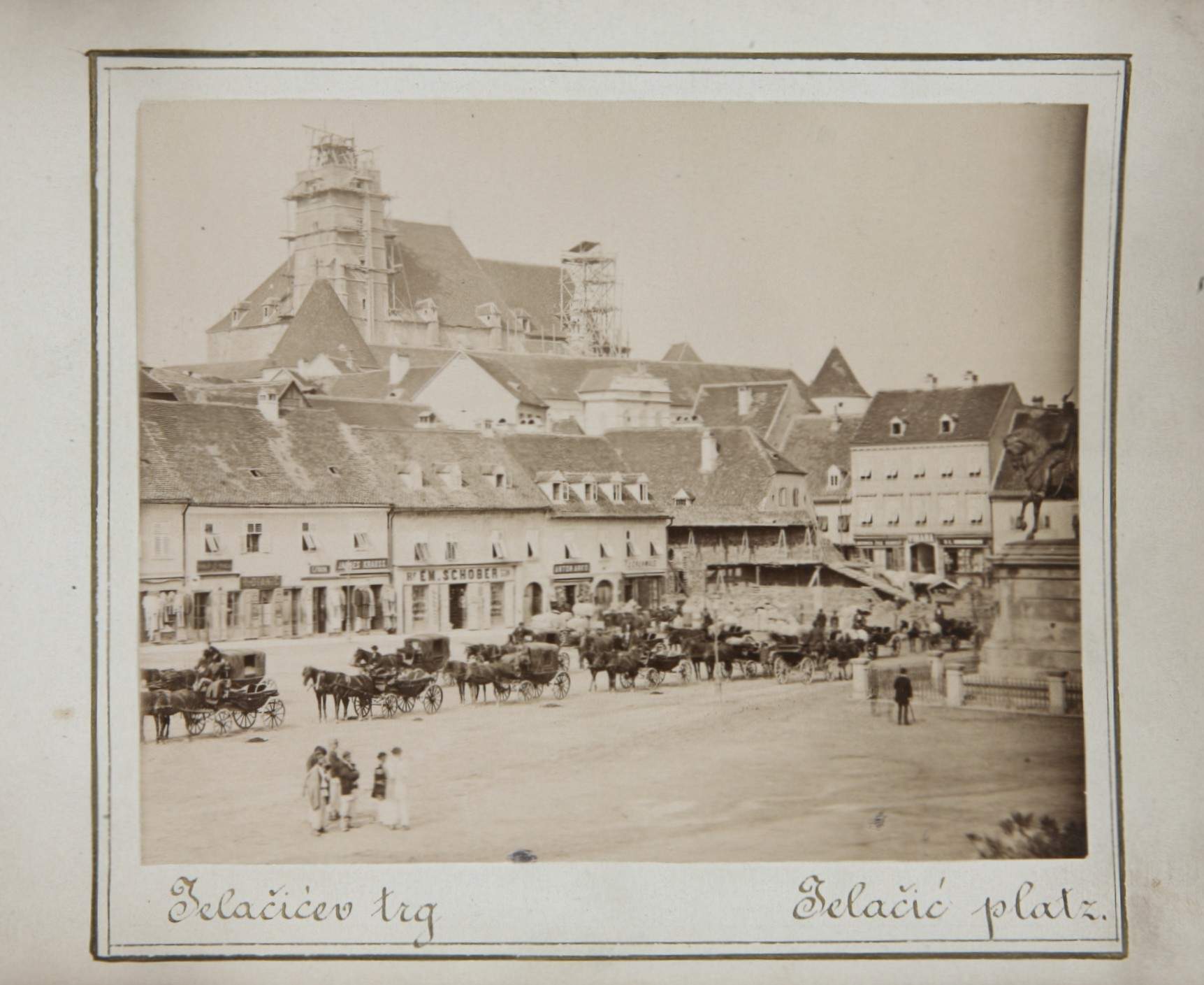
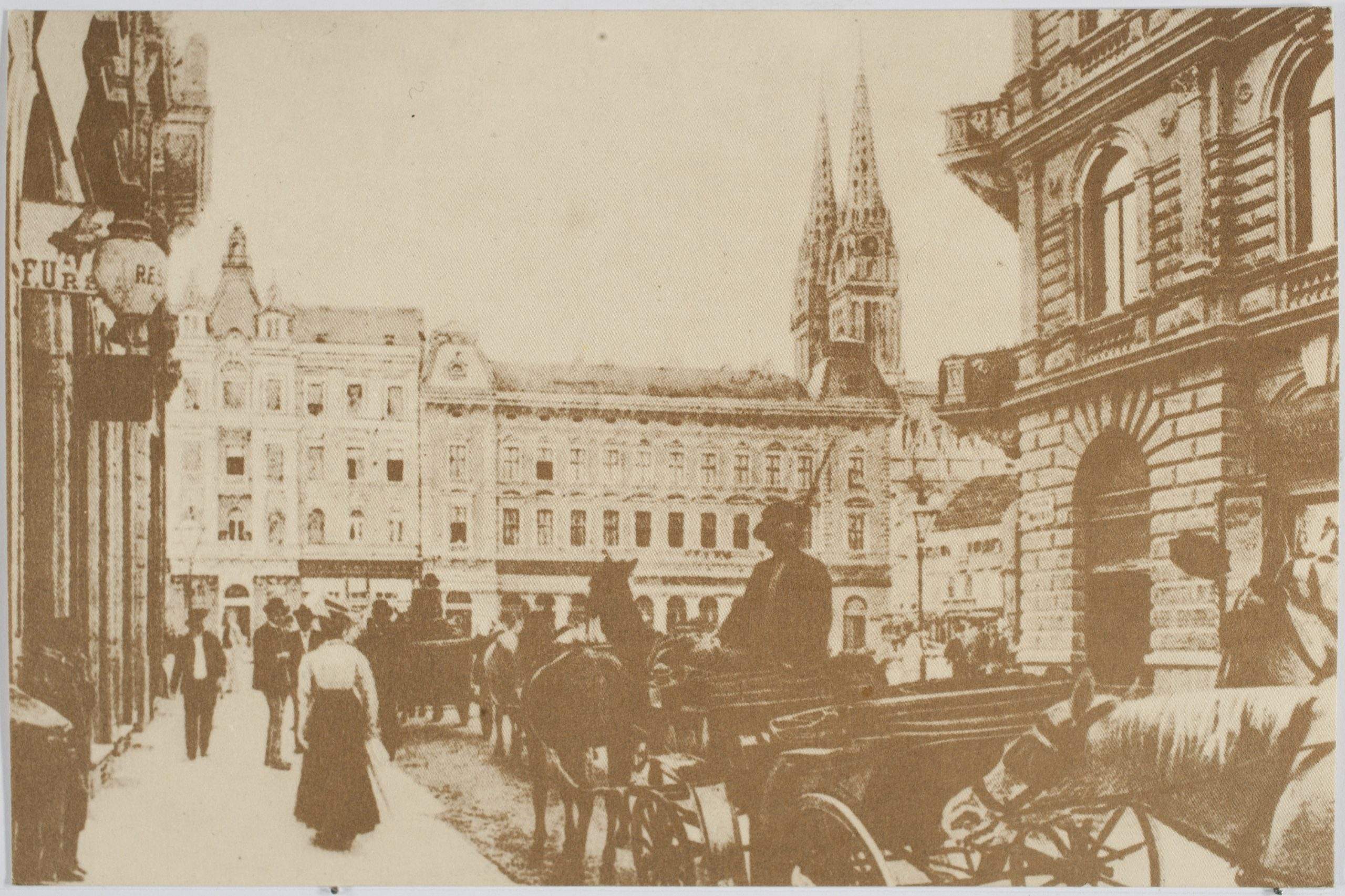
Apart from expert reviews and newspaper articles, information about the Great earthquake can be found in many contemporary records based mostly on personal impressions. For example, Croatian author August Šenoa wrote down his firsthand experience of the earthquake in the feuilleton “Zagrebulje”. Namely, as a city councilor, Šenoa was a member of the special committee involved in the survey of damaged structures, damage assessment, and recommendation of restoration measures. It seems that during this appointment, Šenoa’s health drastically deteriorated, leading to his death a year later.
The survey included Jelačić Square, Zrinski Square. I engaged in one of the outings, in order to bear witness to this sight. Slim white clouds chased each other over the sky, while the moon shown through them. A crowd of frightened people occupied Jelačić Square, families sleeping in carriages after having fled their homes. Houses loomed over the square like dark giants, while in the midst of it all, in the moonlight, stood the statue of Ban Jelačić. People roaming around like a silent, timid current, looking sideways at the houses and softly whispering. Ghosts, you would think. On Zrinski Square, surrounded by tall, dark palaces, the dark ribs of naked trees form a row. Oil lamps quiver like candles in the graveyard. In the center of the park, where music usually warms the cheerful hearts of Zagreb’s residents, wooden shacks are placed, where people sleep. But many could not find a shack to sleep in. Women and children sit and lie on benches, and on the grass. These are not the poor who have nothing to eat. These are people from fine families, but whose fortunes reside in their houses, which they fear will collapse. If you could only see those pale faces, those desperate, still eyes. I have never seen a more horrible sight, I have never felt a deeper sorrow in my life. For what? You can save yourself and your loved ones, but Zagreb, the entire city! It was as if the devil raised a poisoned dagger to thrust it into the heart of Croatia – into Zagreb!(from: A. Šenoa, „Zagrebulje“, Vienac, 1880)
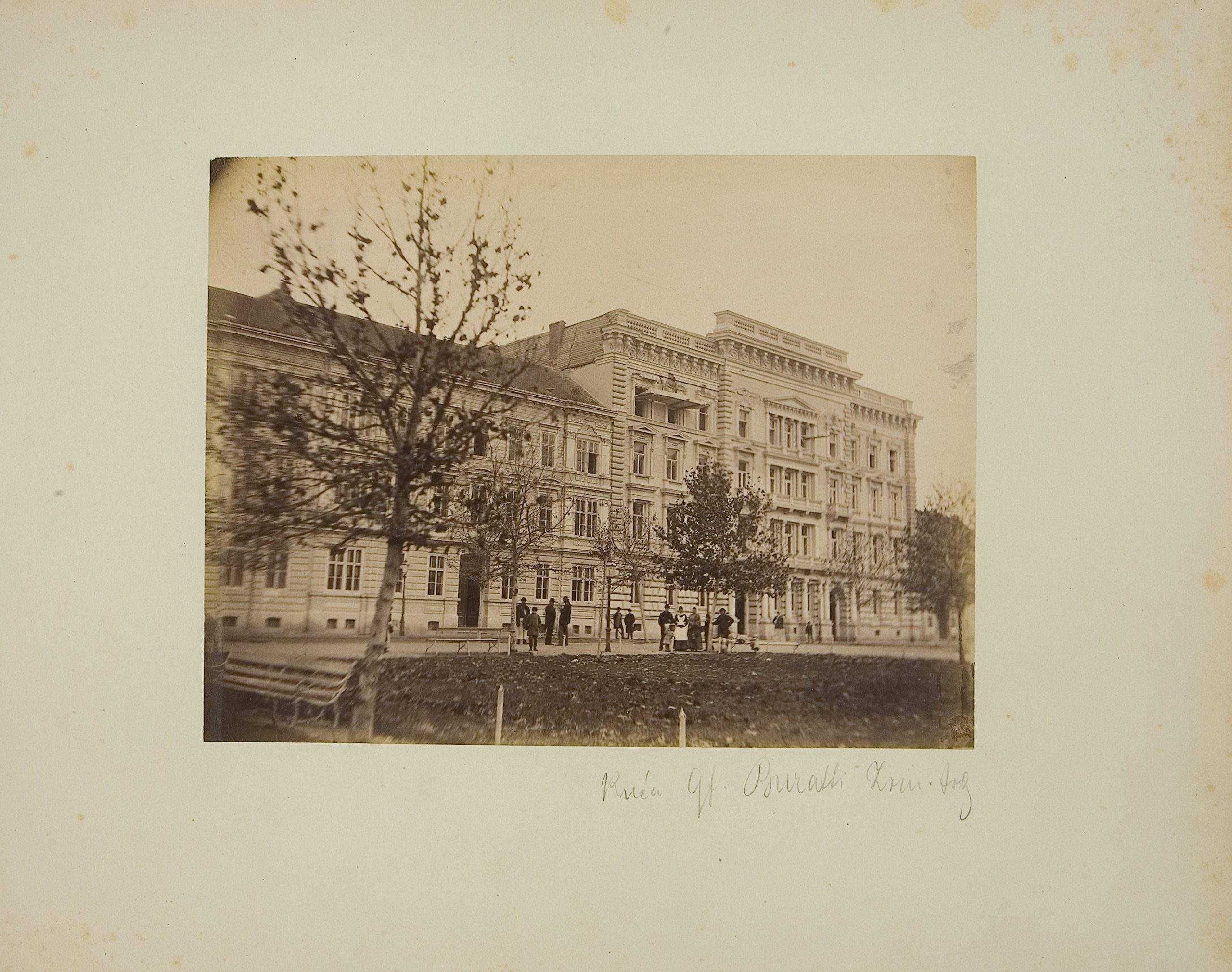
[…] If we only take a look at Jelačić Square. Here we can instantly see Prister’s house, which could not survive the force of the earthquake. – Its walls have cracked, its vaults have collapsed. […] Other houses on the square have also suffered, more or less, whether because their chimneys toppled, or parts of their walls gave way. There are also houses that were left intact on the outside, so that you would almost congratulate the owner, but only when you enter do you see the devastation caused by the earthquake. If we take a walk around Zrinski square, we will see that the beautiful palace of Baron Vranicani is missing some of its wonderful statues. Among them, four that represented the four seasons of the year, which have collapsed through the roof. The vaults have caved in, and the walls have cracks as thick as a finger. The palace of Count Buratti has suffered perhaps an even worse fate. The same can be said of the court of justice, whose chimneys have collapsed through the roof, and whose walls have cracked open and are swaying. The palace of the Academy seems not to have suffered much damage, but it has surely suffered severely. […](from: The horrible days of Zagreb. Notes on Zagreb’s earthquake that occurred on November 9th, and the following days, in the year 1880, 1880)
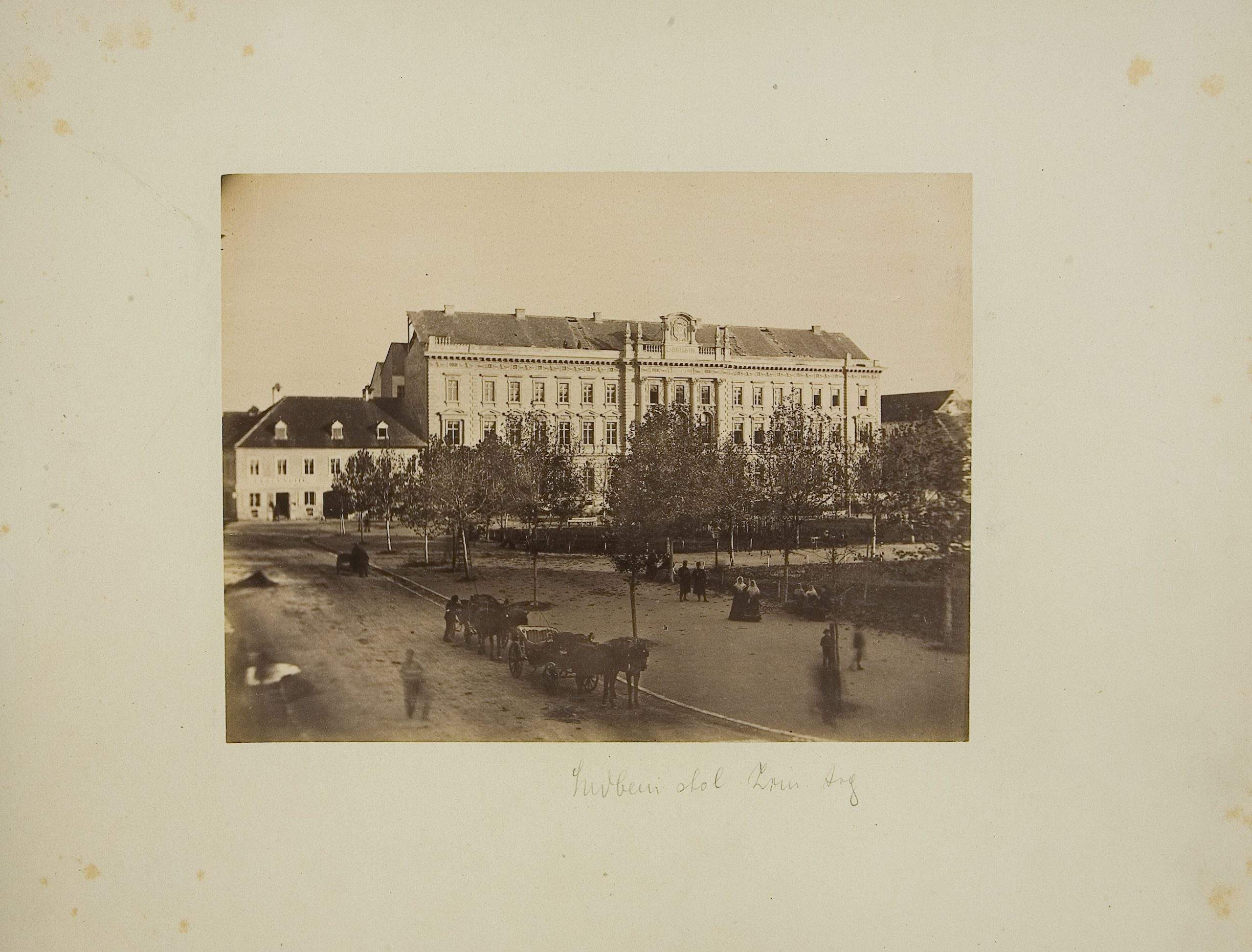
The newly erected palace of the Academy, which had not even been finished at the time, was not structurally threatened, but still suffered heavy damage, primarily in its interior. For example, one newspaper article speaks of a single “insignificant” crack on the northern façade, between the first and second floor. A collapsed chimney broke the glass roof above the atrium, which housed objects from the newly immigrated archaeological section of the National Museum. Shards from the twelve fallen glass plates caused further damage to the objects already damaged by the earthquake. The director of the archaeological section, Šime Ljubić, reported to the Provincial Government on the same day that many glass and ceramic objects, especially from the Ancient Greek period, have been broken.
Initial assessments predicted that the renovation cost would amount to 6.000 forints. However, as subsequent earthquakes lead to further damage to the palace, a more detailed inspection was undertaken, which lead to the doubling of the previously predicted budget. It was ascertained that the atrium pavement had been completely ruined. The wooden roof construction had also suffered significant damage. Vaults had cracked in certain places. The joints between bricks had loosened in many places, especially in arches above windows and doors. Throughout the building, walls and parts of ornamental beams had been damaged, the plaster had cracked, and the paint had peeled off. Balustrades had loosened and been damaged. An array of other damage had been recorded. The palace was finally repaired at a cost of 14.000 forints, paid for through a loan from the Provincial Government from the fund for earthquake damages. The Government hired civil engineer Kuno Waidmann as the head contractor, while oversight was conducted by the Government’s Construction Department. At the end of August 1881, a small auction of paintings by Maks Methudy was organized at the palace, while November saw the organization of the Exhibition of domestic crafts on the second floor. By that time, repairs had largely been finished, so the Academy was able to start with its regular operations. At the end of November, the first ceremonial council was held in the new seat of the Academy. However, the final decoration and furnishing of the palace’s interior, as well as preparations of the gallery for the import of paintings, would take another three years to complete.
Many have been asking the question: has the new Academy building on Zrinski Square been damaged in the earthquake from 9th November, and if it has, how much? Those who ask this question are worried because of the great effort and cost that went into the erection of this beautiful building, which has not even been completed yet, and which houses priceless objects from collections of both academic and museum value. Authorities are trying to convince us that the building itself has not suffered any structural damage. Its walls have remained intact; the only and quite insignificant crack, which is hardly noticeable, runs above the balcony between the first and second floor. The beautiful slender archways in the interior have not moved either. Therefore, all structural parts of the building have withstood the immense quake. However, the sifter parts have not. The plaster has shattered in many places, parts of garlands between columns have peeled off, the paint has cracked in rooms and halls. Since it is a large building, even this kind of damage is not insignificant, and will be felt by the Academy, as the total cost of the erection has still not been paid. If funds will be allocated for those structures damaged in the 9th November earthquake, the academy building should not be forgotten. We fear that this misfortune will postpone the furnishing of the painting gallery, as this task cannot be undertaken before the damage is repaired and the building returned to its original state. It had already been decided that the painting gallery would be finished by next summer, but now it remains uncertain, and depends on whether the Academy will be able to fully restore its house. The horrible earthquake has in this way placed our hopes on hold. We hear that the collection from the archaeological museum has also been heavily damaged, especially the recently acquired copper objects.
According to the exaggerated and untruthful description in yesterday’s „Agr. Ztg.“, the whole Academy would basically be a ruin. We fail to comprehend the goal of this kind of exaggerated and untruthful reporting.(“The Academy Building”, Obzor, 15th November 1880)
Although this was unfortunately not the case with the Academy’s palace, the damage to many structures in Zagreb and its surrounding area was well documented thanks to photographs taken by five photographers – Otto Dasch, Hinko Krapek, Gjuro Varga, Hermann Fickert, and Ivan Standl – who began to record the aftermath of the earthquake just three days after it shook the city. The sales of individual photographs and photo albums, as well as the chance to market them to an interested foreign press, promised a lucrative business opportunity. Along with individual photographs, three photo albums with motives of Zagreb’s earthquake have been preserved: Fickert’s Memento of the Zagreb earthquake of 9th November 1880, the large album Pictures of the Zagreb earthquake of 9th November 1880 that, apart from Fickert’s work also includes photographs taken by Varga, Dasch, and Standl, and Pictures of Zagreb’s earthquake as the latter’s own composition. Apart from the quality of its photographs, Standl’s album also stands out as a part of a larger endeavor that surpasses the entrepreneurial ambitions of a local photographer. Namely, the Academy’s Department of mathematics and natural sciences started a project of collecting information about the earthquake. Being aware of the importance of the visual documentation, they hired Standl to photograph damaged structures of their choice that he had not yet recorded. They paid him a fee of 250 forints from the Government’s earthquake fund. His task was to create a “collection” of heavily damaged structures and churches, a copy of which would then be provided for the Provincial Government, the University Library, the Zagreb City Archive, and the Court Library in Vienna, as well as to the Academy itself. The Academy’s copy of the album, which is also the most complete one, includes 29 photographs and is kept in the Strossmayer Gallery.
Several images by Standl were also included in the Report on the Zagreb earthquake of 9th November 1880 by Academy member Josip Torbar, published by the Academy two years later. Standl’s photographs were also used by Max Hantken von Prudnik (Das Erdbeben von Agram im Jahre 1880, Budapest, 1882) and Franz Wähner (Das Erdbeben von Agram am 9. November 1880, Vienna, 1883) in their overviews of the Zagreb earthquake. In response to the earthquake of 1880, the Department of mathematics and natural sciences chose a circle of experts to be members of a new board for earthquake research and information gathering on earthquakes in Croatia and Slavonia. This, in fact, paved the way for the development of seismology in Croatia.
Esteemed Academy!
This Department, which has endeavored to gather information about the earthquake of 9th November 1880, finds it essentially necessary that this information be accompanied by pictures, as the most important evidence for the damage inflicted by this disaster; since photographs are the most appropriate form for this purpose, and since many of them have already been created by the Academy’s own skillful photographer, Ivan Štandl, it would be useful to hire him to create records of other objects and complete what is missing. For this purpose, he would require time and travel expenses, which the said photographer could not manage on his own, as current circumstances do not allow him to get work. Also, his workshop/atelier has been almost demolished, and his chemicals, with all their bottles and pots, heavily damaged. This is why the Department suggests that the esteemed Academy contact the Provincial Government and ask them to provide funding in the amount of at least 200 forints to the Academy’s Board, which would be allocated to the Academy’s photographer, Ivan Štendl, as travel expenses. The photographer will therefore make the commitment to create a picture collection of all buildings and churches that were heavily damaged in the earthquake, one of which would be sent to the Government, one to the Academy, one to the University Library, one to the Court Library in Vienna, and one to the Zagreb City Archive, at no further cost. The Department and photographer will decide and agree which buildings will be photographed.
In Zagreb, on 18th December 1880
For the third Department, Chair Dr. Schloser. (transcription of the letter by J. Schlosser to the Academy on 18th December 1880)
